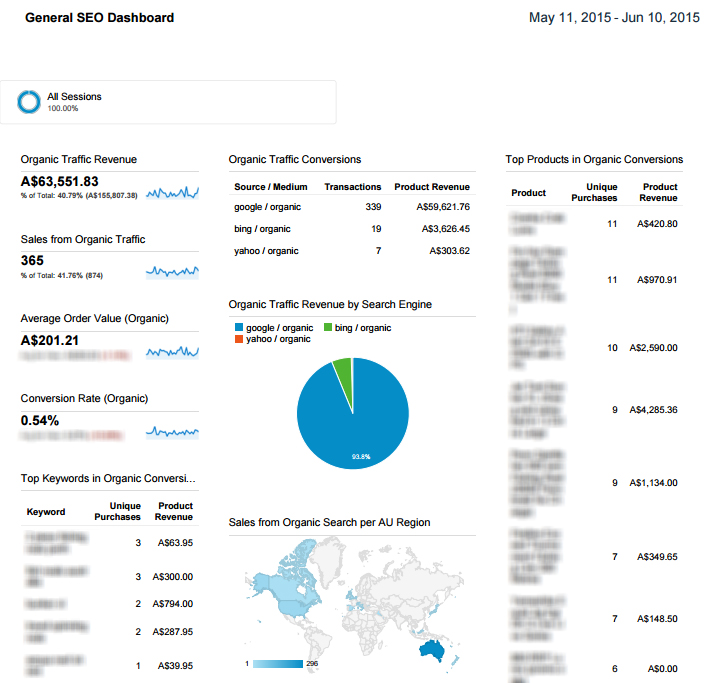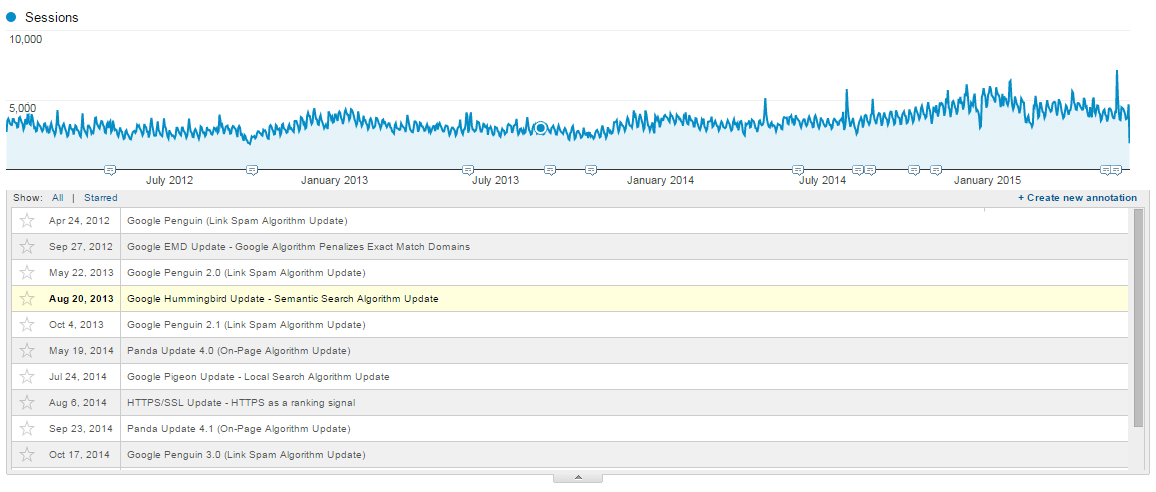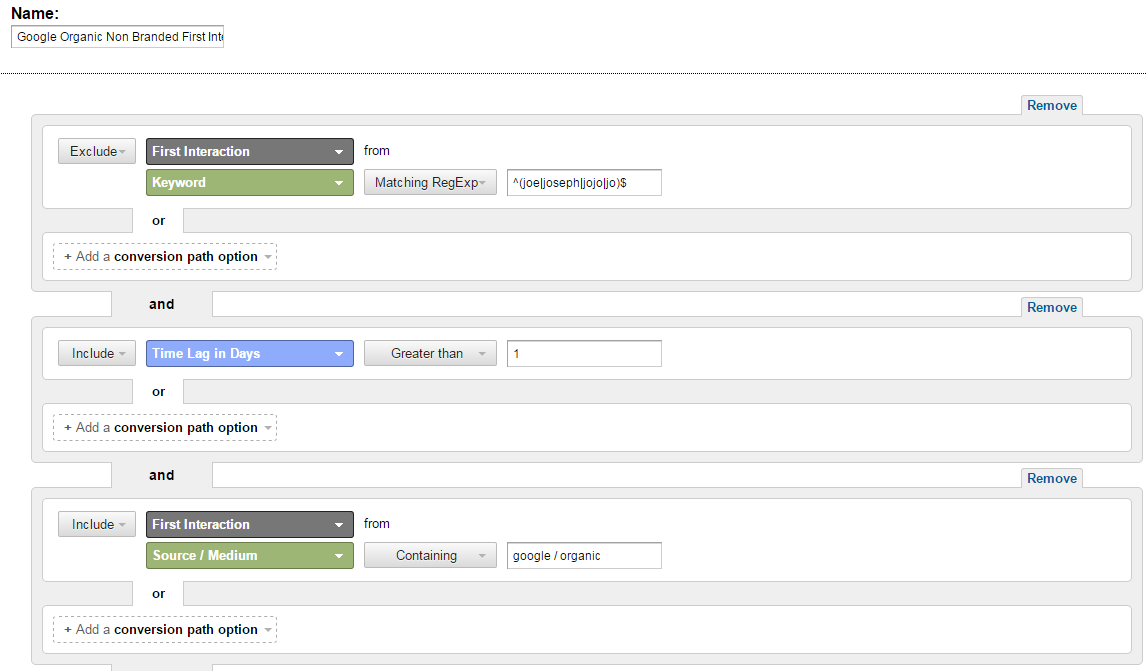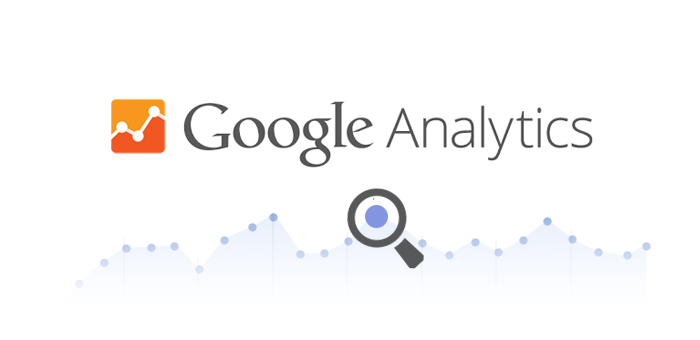Advanced Google Analytics Tactics For SEO
In this blog post, we are moving away from our usual SEM articles and talk about making the most out of your organic traffic data using Google Analytics. If you have been staring at your bland default data in Google Analytics for years, this article will help you unlock some of the things that you may not find in your current traffic reports.
We have been doing a lot of custom reports and tracking using Google Analytics for our PPC campaigns lately and I thought I might share a few ideas that can make your organic data shine.
Before proceeding, you need to make sure that all the basics in Google Analytics have been covered, such as:
- Proper implementation of Analytics tags
- Correct goal tracking and appropriate funnels
- Correct social platforms into the social settings
- Ecommerce and revenue tracking (for Ecommerce sites)
- Implementation of Google Tag Manager (optional but it can save you time and effort in the long run) which will help you track events, and other micro conversions
These will allow you to make sense of your digital efforts and make digging through data a lot easier. It is always a convenient thing to make decisions and provide solutions that are backed by data.
Use Custom Segments For Organic Traffic
Using custom segments to drill down further through your Analytics data will help you generate ideas on how to make more out of your organic traffic. You can do very complex segments by playing around with the existing filter options or even better with Regular Expressions or RegEx. If you need a quick character cheat sheet of RegEx, you can go to the online tools section of our website.
An example scenario where you can use custom segments: You have an Ecommerce business called Online Shopping Joe. Your goal is to find out which non-NCR region in the country gets the most non-branded organic traffic conversions to determine if it’s worth it to launch a promotional campaign from within that region.
In this example, you need to first know which region in the country gets the most sales. You can do this by using the default organic traffic segment in GA then go to Audience > Geo > Location, then filter the data into transactions.
Now let’s assume that Davao City gets the most organic conversions. You can now use a combination of filters that include the geographic location (country, region or cities), organic traffic, and the keywords to get your desired segment. To create a custom segment, go to Admin > Segments:
The segment filters in the image above includes the organic traffic that came from Davao City and excludes variations of the brand name – Online Shopping Joe, using Regex where Joe is a stop word for the brand name. You can then save this and use it to segment the traffic in your Ecommerce tracking and see the conversion rates, average order values, and total revenues.
This will enable you to have an exact idea if you can do a first time order discount promotion for Davao City and you can even gauge the monetary value of this promotion. Knowing the monetary value of the traffic will also provide you insights if you can do free shipping to Davao. You can also base your promotional campaign on the segmented view of demographics data, mobile data, interests, and many others.
Customized Dashboards and Reports for Organic Traffic
With custom dashboards, Google Analytics provides marketers with a medium where you can easily provide direct answers to “real-world” questions about your traffic. Clients will ask questions like: Can you tell me how many people are abandoning their carts using Apple and Samsung Devices? What’s are the hours wherein our conversion rate from our email campaign is at its best? What internal site search keywords have the largest bounce rate? What’s the value of a lead from different mediums of organic search?
With custom dashboards, you can answer all these questions and put the answers on a single page report that you can export as a PDF. You can take it a step further and create custom reports to dive into an even bigger set of data.
Custom reports and custom dashboards can cut through all the essentials and can offer your clients a clearer picture of what they really need to know about their digital campaigns. Custom dashboards can accessed on top right of your reporting sections while your can create custom reports by going to the Customization option on the GA main navigation.
Here’s an example of a custom GA dashboard with focus on organic traffic:

In this example you can reinforce the value of your efforts in increasing your organic traffic. You can create a number of widgets and again, use Regex filters to drill down on organic traffic highlights and opportunities. You can let your creativity flow with these custom tools – You can present timelines where you have increased organic traffic revenue, create landing page tables where bounces are analyzed, and many others.
Other ways we use dashboards and custom reports: Big Spenders Dashboards, Abandoned Cart Dashboards, Bounce Rate Opportunities Dashboards, Repeat Purchasers Reports, Mobile Performance Dashboards, Advanced PPC Reports, Country Specific Reports, Custom Page Speed reports, Custom Real Time Trackers (my favorite) and many more.
Annotations based on Major Changes to the Google Algorithm
Google Analytics Annotations are the small simple notes that you can put in your Analytics data timeline graphs that can provide insights on possible traffic spikes or traffic drops. Annotating major occurrences in Google Analytics is one of the easiest ways you can retroactively make sense of your data and answer lingering questions about your traffic.
You can generally use annotations to indicate seasonal promotions, campaign start or end dates, major site/landing page redesigns, installation a new feature on your website, attacks towards your websites, and many others.
If you are one of those who only rely on organic search traffic for your business (I don’t recommend this), it’s a good idea too keep track of announced major Google Algorithm changes and make annotations of it in Google Analytics

You can take this a step further by monitoring Mozcast for drastic changes in the Search Engine Results Pages. I’m not a big advocate of these third party tools since most of them can be misleading or provide a bunch of false positives/negatives, but again, it can be worth it if at least 85% of your traffic comes from organic searches. Keep track of the “weather forecasts” and annotate algorithm weathers that are above 90 degrees.
Use Organic Conversion Segments
In SEMjoe we analyze all interactions that the customer takes that ultimately leads up to a conversion, and not just last click/final touchpoint conversion. A single conversion will sometimes take many sessions: A person might discover your website through organic search, then later goes back after clicking a display banner ad, then bookmarks it, then ultimately convert after visiting your site via the bookmark.
Google’s attribution reports enable you to analyze the sequence of paths that your customer takes that lead to conversions. In the example above, you can probably attribute a large percentage of the conversion to organic search (The First Interaction), wherein the customer discovered your brand.
The great thing about google’s attribution reports is that you can fully customize a conversion segment. In GA go to Conversions > Attribution > Model Comparison > Conversion Segments > Create New Conversion Segment:

In the example above, you can expound on the scenario by creating a custom conversion segment and filter out first-interaction organic traffic conversions that occur using non-branded search terms. Again, you can use Regex to filter the brand searches and use filters to adjust the time lag per conversion. You can then export your attribution data and use excel to do all sorts of things to it to find more value.
With attribution models, you can use the same filters to check the hidden value of your top keywords. And in a true Sabermetric fashion, you can put more effort in ranking for the most valuable first interaction keywords with the lowest competition.
If you are interested about what we do for our clients, we offer Google Analytics management, consulting, and Google Tag Manager custom tracking services.
We always draw our conclusions based on carefully analyzed data and we don’t do random optimization or optimization based on a set of packages. The great thing about data is that you’ll realize that some of the textbook “best practices” are not really an option for your campaigns.
Every set of data is unique, and if you are interested in having your data analyzed by our GA certified professionals, you can fill out our contact form here.
Comments are closed.


